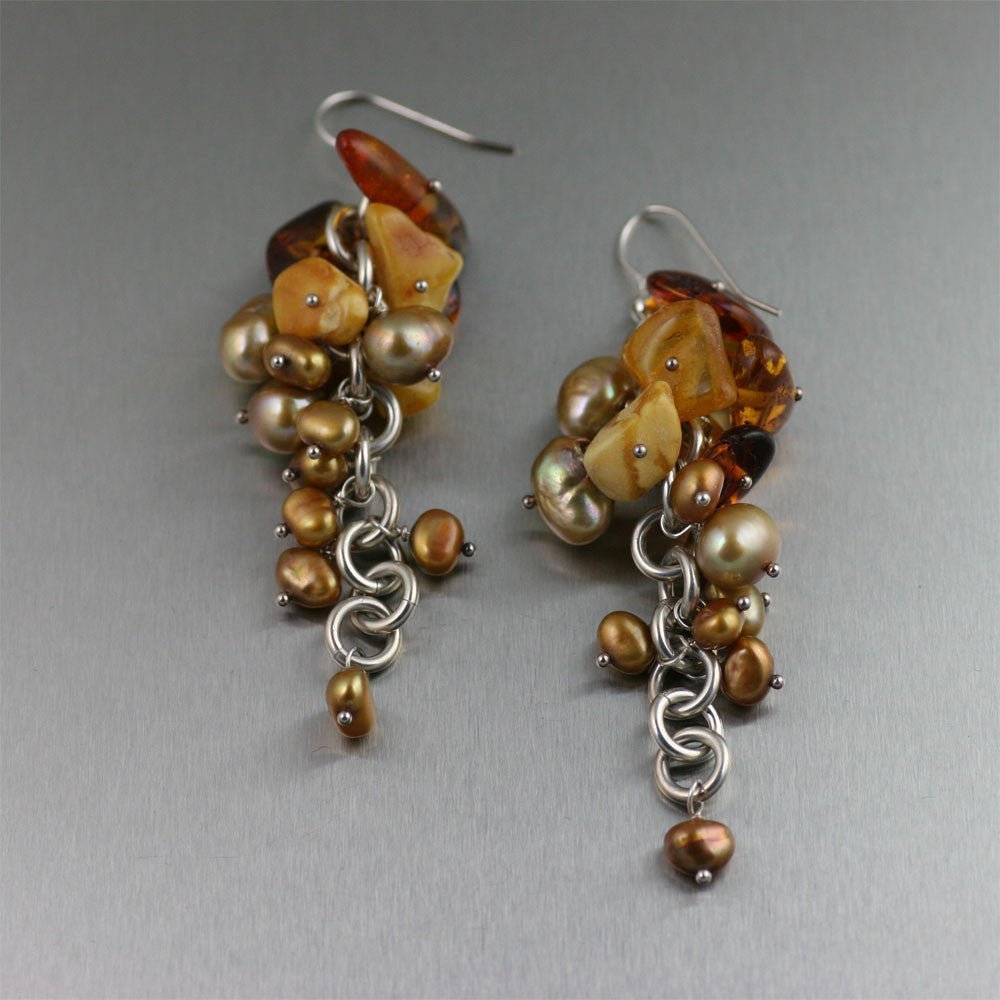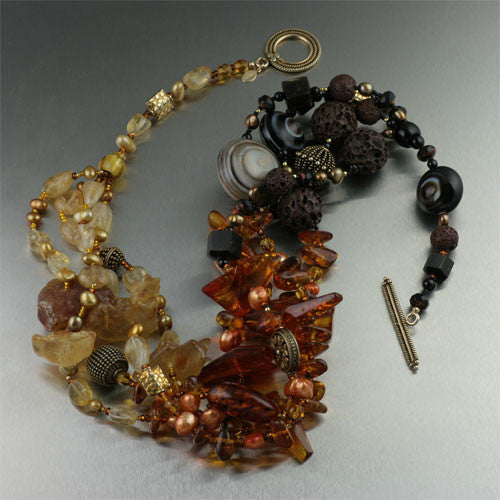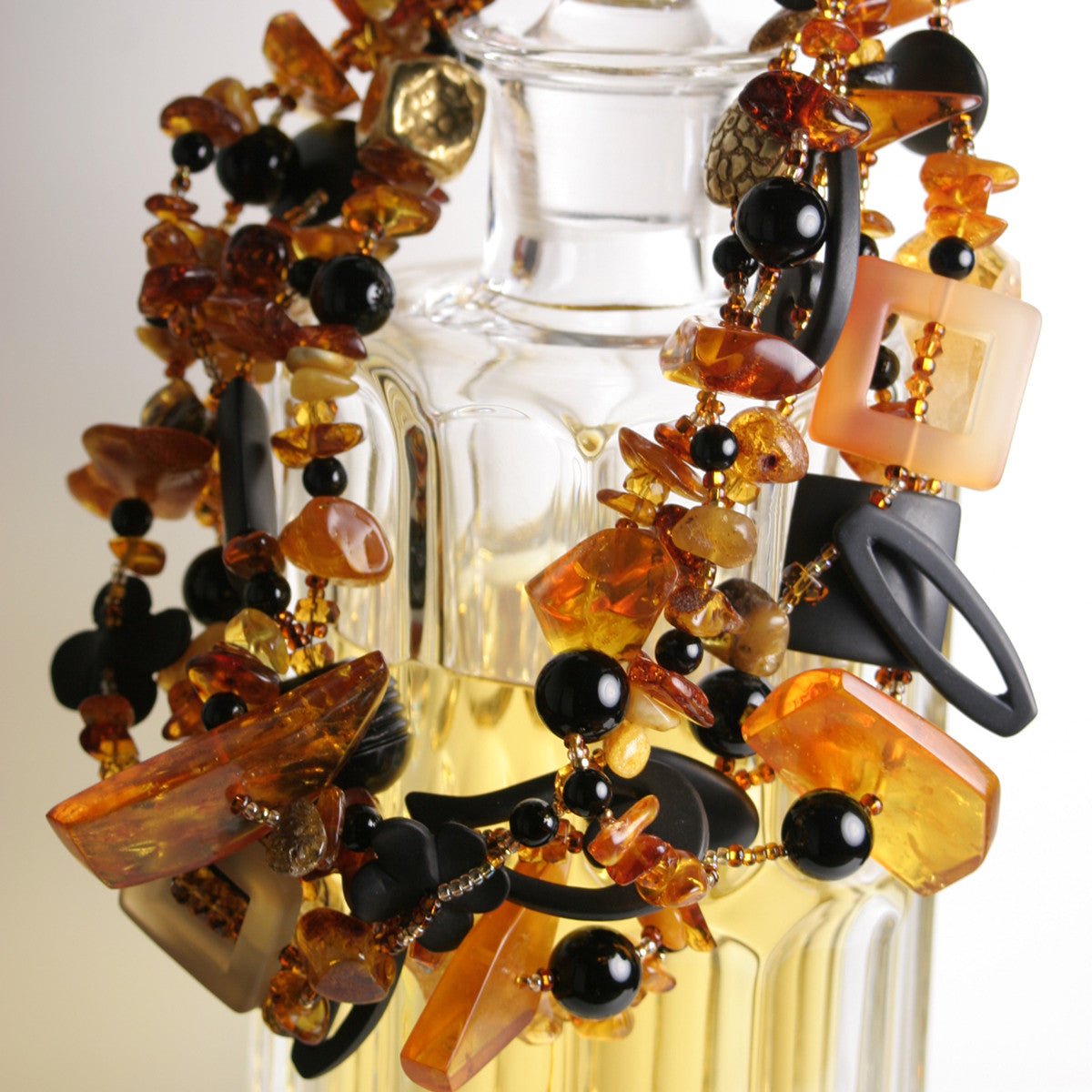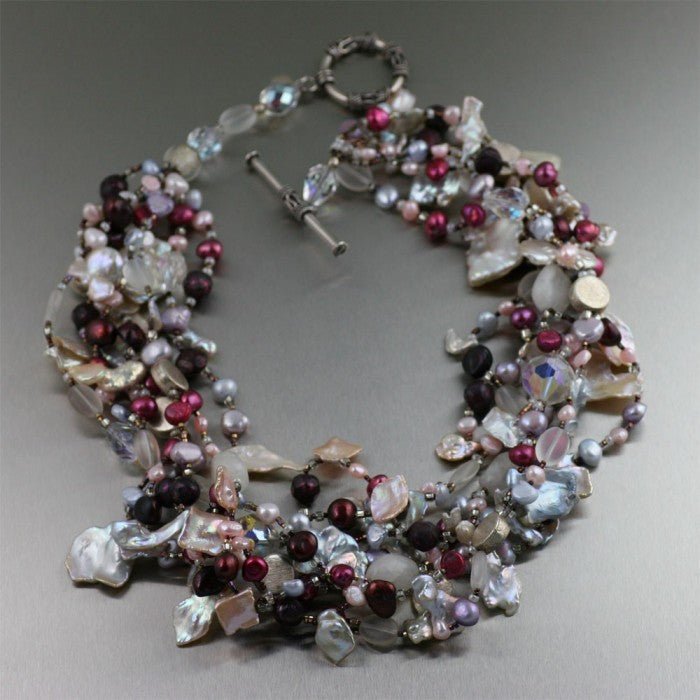All about Amber: Choosing Amber Jewelry
by John Brana
Published date:April 04, 2013

Amber is an attractive, yet delicate, fossilized resin extracted from coniferous trees. It has been popularized due to its deep golden color, fashionable versatility, and geological significance. Amber is often recognized in the form of necklaces, rings, and other pieces of jewelry, with some pieces of the gemstone dating back millions of years. Whether in the form a bracelet or earring, amber is mesmerizing to look at and with the proper care, can last a lifetime.

Amber has a rich history with the oldest pieces dating back 320 million years ago. The gemstone has been traded for more than 13,000 years, believed to be one of the first commercially-traded goods. It remains popular in cultures throughout the world, especially across Europe. Unlike many other types of gemstones, amber has several unique features. Due to its ability to naturally store static electricity, amber is warm to the touch. This adds value to authentic amber jewelry, as well as a great addition to any wardrobe. Amber can be found in more than 256 different colors.
There are a multitude of types of amber commonly used in jewelry today. The most expensive, and the best value, is authentic amber. Since these pieces are already very old, they are sure to last many more generations and are often passed down from family to family. Imitation amber jewelry is less expensive, but is just as beautiful as its authentic counterparts. Amber can be found in various color variations, from pale greens and yellows to dark browns and honey-colored pieces. Amber is available in nearly all types of jewelry, including brooches, bracelets, rings, necklaces, pendants, and earrings. It is often paired with silver or gold, but can also be encrusted in copper, brass, aluminum, and other metals. For those who prefer natural jewelry, amber can also be designed with hemp. Many people love amber for its geological history. Some pieces of authentic amber can be found with fossils, insects, and other true specimens forever sealed within the resin.

Amber is a much softer material compared to other types of gemstones. It requires special care as it’s more susceptible to damage. Even mild chemicals and sudden changes in temperature can cause amber to crack or break. Most authentic types of amber jewelry are rated on a scale of hardness from one to ten. From the Baltic region, Baltic amber is the hardest, making it a popular option for jewelry designers.
Brief History of Amber

Amber has a rich history with the oldest pieces dating back 320 million years ago. The gemstone has been traded for more than 13,000 years, believed to be one of the first commercially-traded goods. It remains popular in cultures throughout the world, especially across Europe. Unlike many other types of gemstones, amber has several unique features. Due to its ability to naturally store static electricity, amber is warm to the touch. This adds value to authentic amber jewelry, as well as a great addition to any wardrobe. Amber can be found in more than 256 different colors.
Varieties of Amber
There are a multitude of types of amber commonly used in jewelry today. The most expensive, and the best value, is authentic amber. Since these pieces are already very old, they are sure to last many more generations and are often passed down from family to family. Imitation amber jewelry is less expensive, but is just as beautiful as its authentic counterparts. Amber can be found in various color variations, from pale greens and yellows to dark browns and honey-colored pieces. Amber is available in nearly all types of jewelry, including brooches, bracelets, rings, necklaces, pendants, and earrings. It is often paired with silver or gold, but can also be encrusted in copper, brass, aluminum, and other metals. For those who prefer natural jewelry, amber can also be designed with hemp. Many people love amber for its geological history. Some pieces of authentic amber can be found with fossils, insects, and other true specimens forever sealed within the resin.
What to Know about Amber

Amber is a much softer material compared to other types of gemstones. It requires special care as it’s more susceptible to damage. Even mild chemicals and sudden changes in temperature can cause amber to crack or break. Most authentic types of amber jewelry are rated on a scale of hardness from one to ten. From the Baltic region, Baltic amber is the hardest, making it a popular option for jewelry designers.
Caring for Amber Jewelry
Due to its fragility, amber requires careful care and storage to maintain its bright appearance and to prevent damage to the stone. Amber should not be exposed to any type of chemicals, including hairspray and makeup. If these products must be worn, apply them prior to putting on the jewelry. Perfumes can also cause damage to amber stones, and should not be sprayed on the area in which the jewelry is worn. Amber jewelry is relatively easy to clean. Simply use a soft cloth dampened with luke-warm water. Felt can also be used to gently clean the exterior of the amber stone. Avoid using any chemical-based cleaners or soap to clean the stone, as these can cause irreversible damage. Amber can also be wiped clean if the stone is only dusty or wet. To polish the stone, use a soft cloth with a dab of olive oil. Again, felt works great but a new cloth should be used each time for cleaning. It’s important to store amber properly or it can quickly become dull and tarnished. Keep your amber jewelry in a satin bag or soft, dry cloth whenever you are not wearing it. This will help to prevent it from becoming damaged with other pieces of jewelry. Each piece of amber jewelry should be stored separately to avoid scratching. Whether you choose authentic amber of an imitation piece, you won’t be disappointed with the unique look that amber provides.Click Here to View More Handmade Gemstone Jewelry
John Brana
Author
John S Brana, based in San Francisco, is the founder of John S Brana Handmade Jewelry and President of Galleria NuVo, Inc. with over two decades of expertise in crafting distinctive handcrafted pieces. Transitioning from a finance and banking career in 2004, John manages everything from design to marketing. His modern, urban-inspired creations have graced fashion editorials, resonating with stylish, adventurous enthusiasts who value exquisite craftsmanship and luxury. Every piece narrates a distinct tale, mirroring the wearer's individuality.
Also in Gemstone Jewelry Blog
Unveiling the Mystique of Moonstone: History, Geology, and Spiritual Significance
by John Brana
Published date:June 01, 2023
Recent Articles
-
Fine Gemstone Jewelry Throughout the Year
Published date:September 22, 2023
-
June Birthstones: The Allure of Pearls and Moonstones
Published date:June 05, 2023
-
Unveiling the Mystique of Moonstone: History, Geology, and Spiritual Significance
Published date:June 01, 2023
-
The Aquamarine: A Gemstone of Serenity and Courage
Published date:July 22, 2022
-
Your Guide to the Blue Topaz Gemstone
Published date:November 21, 2018
-
Jewelry Must-Have: A Gem-Drenched Necklace
Published date:December 15, 2015
-
Peridot – August’s Birthstone
Published date:August 01, 2014
-
Amber Citrine Crystal Quartz Beaded Gemstone Necklace
Published date:March 10, 2014
-
Amazonite Gemstone Jewelry
Published date:February 18, 2014
-
Blue Chalcedony White Coral Necklace
Published date:February 13, 2014




